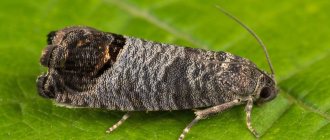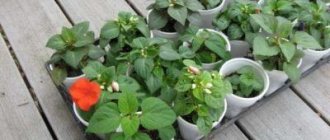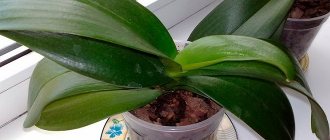Bee layering and its features
Layering is a method of creating a new group of bees formed by dividing existing insect families. It consists of a queen bee and working insects.
Layering helps:
- renew nests after spring culling;
- breed breeding individuals;
- rejuvenate old swarms.
Bee layers have their own characteristics:
- workers are female;
- insects, if they lose their queen, independently hatch a new one;
The length of the period required to create a new nest depends on:
- the strength of the families from which it is formed;
- start time of honey collection and its duration;
- quality of queen bees.
Formation
In the finished hive, the queen bee must fly around thoroughly, then begin oviposition, which can be visually seen. Next you need to perform step-by-step actions:
- Create a separate family, strengthening it with brood from strong nests, preventing swarming.
- Connect the young family with the main one, after removing the female.
- Move the finished frames back to the main hive, and remove the temporary shelter.
Such a simple method as propagation by layering helps an inexperienced beekeeper to constantly keep the hives in good shape and avoid infection and disease.
To make beekeeping successful and profitable, you can use all available methods for optimizing colonies and updating hives. By understanding the basics of beekeeping or how to properly make bee layers and applying them in practice, it is possible to have healthy, strong hives in your apiary and maintain high productivity and profitability of the apiary.
Types of layering
Layers are divided according to several characteristics.
According to the method of formation, there are 2 types:
- prefabricated - a mixture of several different groups;
- simple - based on one bee colony.
Based on the age of insects, the following types of layering can be distinguished:
- from young individuals;
- from old bees;
- multi-age;
Varieties are also designated by fertile and infertile uterus, mature queen cell.
According to the time of creation of a new swarm, layerings are:
- spring;
- autumn.
Basic conditions
The process of organizing layering is multi-stage and requires compliance with certain conditions - it is necessary:
- Start work in the spring (optimally April-May), when bee colonies gain strength after the winter period. In cold regions, it is better to postpone the formation of a new swarm until the summer (June–July).
- When separating insects in a newly formed group for fertilization, ensure a sufficient number of drones.
- Control the temperature. It must be above +20º C for the bees to fly and eat nectar.
- Plan the education of families in advance, before the harvest begins, before the insects weaken.
- Select brood from good, strong families. To do this, you should make an early flight into the hives.
- Use no more than two frames from the mother's nest.
- Include non-flying workers (flying bees behave aggressively towards the new queen and can destroy her).
- When purchasing a special breeding “queen”, prepare the cuttings 2-3 weeks earlier.
- In early spring, organize groups of families that have already begun to swarm.
- Make sure there are fruits in the combs.
- Prepare the hive - insulate it, build frames with honey and wax, paint the front walls in different colors for better orientation of insects in space.
- Keep premises for young families in the shade.
- Collect an additional number of infertile queens, because more than a third of them are lost during flybys.
- Monitor egg laying.
We divide one family into two
We take a hive with the desired colony before the bees start swarming. We place exactly the same one next to each other (inside and outside) and divide equally all the frames from the first nest. It is advisable for the queen to remain in the old hive. In the new one we place frames with sealed worms, larger ones, 2-3 pieces, food, foundation and those that were taken from the old hive. We place the hives at an equal distance from each other. About half a meter. Let's swap the new and old ones.
When the bees fly home after a working day, they will not find the old home. And it turns out that they will share almost equally. But still, most of the “old people” will return to their native womb. The new hive will be dominated by young animals. And as soon as the queen is fertilized and begins to lay eggs, the bee colony will become stronger. If her own queen does not appear there, she will be artificially implanted.
Everything here is simple and clear. They divided everything in half, and there were two full-fledged swarms.
Layering is a selection from the main colonies with ready-made bee brood. They are made to form new families, to prevent swarming, to change the queen or to preserve it.
A beehive, namely a family, is a very complex and balanced organism. It consists of bees with different specialties - workers, nurses, drones and, of course, the queen. Sometimes she is called the queen. She does not so much manage the family as she is necessary for procreation, as she is capable of laying up to 2000-3000 eggs per day. This is not very much, considering that on average a worker bee lives 40 days, a maximum of 7 months if it is a special, winter breed.
In general, the bee colony is so functional and independent that even the loss of the queen cannot lead to its death; the family simply freezes in its activities for 2-3 weeks until a new queen bee is born.
Why are layering needed?
Bees are becoming less and less common in the wild; more of them live in apiaries. Man has been breeding these insects for more than a millennium and has studied the lifestyle of his little helpers quite well.
In order for the bees to bring more honey and reproduce well, the beekeeper carefully monitors the condition of the colony. And if the queen has grown old or died, then there is a need to quickly restore the functionality of the hive. And we also must not forget about the constant expansion of the farm; one large bee colony can be skillfully divided into 2 hives, then the profit will be twice as much. Thus, the well-being of the beekeeper and the prosperity of his farm depend on the question of how to create a layer of bees without a queen.
To stop bees from swarming in the old nest, the breeder removes unnecessary frames with wax and food residues. Instead, he puts in new ones, with foundation and sealed offspring. In this beehouse, they begin to actively build honeycombs for new offspring and honey reserves.
The necessary conditions
When starting to form a new bee colony, it is necessary to take into account the following recommendations:
- in the southern regions it is better to create a new swarm in May. In cold and temperate regions, selection begins no earlier than July. Since insects need to recover after prolonged cold weather;
- with the onset of spring, layering is first done from those families that produce the least honey;
- The optimal temperature for layering is +25C. At other temperature indicators, the fetal individual will not leave the hive, which means there will be no meeting with the drone;
- in the bee family there must be drones responsible for fertilization;
- the formation of layering begins in advance in order to obtain a breeding queen;
- It is not advisable to create a new swarm right before the start of harvesting. Otherwise, the worker bees will weaken.
Many beekeepers select for a new swarm in July. It is advisable to start creating 40 days before the main bribe so that the queens have time to lay eggs. This will strengthen the working insects before harvesting.
Organic beekeeping
Selecting material for layering
Next we do this:
We find open brood (larvae that have not yet pupated) and shake off the bees with a sharp movement. This is done so as not to drag the queen out of the nest. We put it in half of the empty compartment of the case. So we move a couple more frames with a worm from the hive. Place honey on one end of the open brood and bee bread on the other for nutrition. The result was brood without bees. We shook them off.
We place the foundation prepared in advance in the family hive, always between the sealed brood . This is done to ensure even alignment of the sheets. Our uterus needs free space to lay eggs. Dry sheets will provide her with this space. We install them along the edges, near beebread and honey.
What the hive and body look like now:
- Honey
- Sushi
- Printed brood
- wax
- Printed brood
- wax
- Printed brood
- wax
- Sushi
- Perga
Checking the work of the queen bee.
On the 9th day, upon inspection, we find that all open brood has been sealed. This is a sure sign of active work of the uterus below. Again we take the open brood out of the house and add it to the sealed one in the case. And instead we put wax. We repeat all the steps. After another 9 days we do the same. We wait three days and begin to form the layer.
The moment has come when the body is full. We take out the recent three-day-old brood and move it to a new housing. Later we will install it on the old house, as we did before. We install the formed body with a layer on the bottom. It turned out to be a hive. We take out empty used frames from it. Cover and wait for the flying bees to leave. They will understand that the house is not the same when they smell the new bottom. That's it, the layer is formed and ready to receive a new queen.
What you will need
Before layering bees in the spring, you need to prepare:
- A new hive, a multi-body model would be optimal here.
- A core wouldn't hurt either; each one would need 2-3 frames. They are selected only from young, strong families.
- You can’t do without a mature queen cell, which is also taken from healthy insects.
Queen cell, inside – pupa and milk
- To insulate the house, you should buy foam plastic or pillows made of moss, tow, and reeds.
Polyurethane foam for insulating hives
- A roevny will be very useful, with the help of which they are transferred from one home to another.
- And lastly, the female herself, preferably fertile.
How to make a layer of bees during swarming
Some beekeepers themselves destroy fistulas (queen cells made by bees). Beekeeping encyclopedias say that this is pointless. Insects that are determined to swarm cannot be stopped. Layering during swarming is done in order to retain part of the family, grow it and unite it with the main one. Be sure to put the hives in a cool place. This will calm the insects. This way it will be possible to avoid the weakening of the bee family and the loss of honey during global flowering.
Preparation of layering with the queen
You can form early layering with a fertile bee. You can purchase a breeding queen in May. However, it should be taken into account that the price of a uterus is not always affordable. In addition, there is a risk of death of the fetal individual due to improper replanting. Therefore, it is better to use a family fetus. The Central Russian bee gives good results.
Formation of layering without a uterus
When queenless layering is done, frames with closed brood from strong colonies are taken and installed in the new hive. It also contains sheets of wax, honey and dry food. With this option, the queen is purchased separately, or a frame with a queen cell is placed in the hive. That is, insects grow it themselves. It is more economical and often safer.
They plant it in a cap or in a mesh. So that the family gets used to an unfamiliar parent. The bee is placed mainly on a frame with printed brood, ready to emerge. The uterus remains in this position for 2-3 days. The young that emerge from the brood perceive her as their own. And the rest have to accept a new successor to the family.
It is best to do layering before the time of large honey collection begins. This way the family will have time to grow larger, unite and prepare for the working season.
Layering without a queen is easier to accept the fertile individual from the queen cell. However, it should be remembered that the new family will slow down development by two weeks.
In the absence of a second queen, during sampling the strongest bee colony, which has 12 frames, is selected; they and the brood are divided into two halves and placed in a new hive. Houses for honey growers are installed in advance on the site of the old one, as soon as the workers fly away for a bribe.
Having returned from collecting bribes, the individuals are separated and settled in both hives. With this method of formation, one family will be with a maternal individual, and the other without it. After 3-4 days, the hives are checked to determine the presence of new queen cells. If there are any, they are carefully examined and rejected, leaving the 4 strongest.
After rejection, a second check is done a day later. Typically, the new queen must do the seeding. In its absence, the insects are returned to their original place.
Formation of layering in spring
Increasing the productivity of the created swarm by 60% is a solvable task. For this purpose, beekeepers make early prefabricated layerings. Perform this process in the following sequence:
- select several strong colonies with at least 6 brood frames;
- 2 frames with flightless young animals are removed from each;
- In total, the beekeeper should get 6 frames. This is enough to form a new layer.
After selection, a nest is prepared and frames with individuals are installed in the center. Frames with honey and water are placed on each side. Next, the newly formed nest is covered. As soon as the worker insects leave the hive, the queen is added.
How to do late layering
Two layers are made from the family. Place both in the hive, through a thick partition. They give them queens or let them raise their own. The young mothers soon lay eggs, and the insects actively begin to work on arranging a new nest. At the end of the season, these bee broods are united. It turns out that families have many young, active bees. This means they will survive the winter safely and avoid swarming. And in the spring, with renewed vigor, they will rush to collect bee pollen and nectar from honey plants.
Layering of individuals of different ages
It is faster and more productive to create a new bee colony from a cross between individuals of different ages. This can be done in two ways:
- Move the old and new hives. The uterus does not need to be moved to another place, because the bees will hatch it themselves. Insects will live in both houses. After 4 days, they need to be gradually moved away from each other by 10-15 cm every 1-2 days.
- Remove the hive at a distance of 5 km from the apiary and treat it with a decoction of mint and lemon balm so that all insects have the same smell. Then transplant the individuals to a new location. Use a decoy queen.
Which method is better to choose?
To choose the appropriate method for forming layering, you need to take into account the condition of each hive in the apiary. If there are weak individuals in the swarm, it is recommended to mix them with strong ones. This will increase the productivity of bees and increase the flow of honey.
The method of breeding a new bee colony largely depends on the experience of the beekeeper. Beginner beekeepers are not recommended to purchase a queen for layering because... it requires special care and there is a high probability of losing it.
If you have insufficient knowledge of bee breeding, it is better to use different or prefabricated layers.
How to make a layer of bees when swarming with your own hands?
The most suitable phase for the separation of a new family is the beginning of the swarming period.
Stages of creating a layer:
- move 3 frames with mature offspring to a previously prepared hive;
- put frames for food;
- shake off old bees;
- insulate a place for a new family;
- place the female in a cage between the frames;
- release the uterus a day later.
During the swarming period, a layer is created to preserve part of the family. During this period, she grows up and joins the older individuals. To calm the insects, it is recommended to place the hive in a cool place. This will protect the bees from weakening.
Queen bee hatching system
The most popular and widespread system of this type at the moment is a set of equipment called “Nicot” (or Nicot). Unlike most standard queen hatching options, this system is much easier to use and use, making it ideal for the beginner.
Since removing a queen bee is a rather complex task, requiring the proper skills, excellent eye and excellent coordination of movements, it is not surprising that any equipment that facilitates this process is received with a bang by beekeepers. At its core, Nikot is a slightly modified (or modernized) Genter cell system.
The main idea is that the queen is hatched without the need to transfer the larvae. Despite the simplicity of the design and idea, at the moment the main manufacturers of this group of auxiliary products are countries such as France and Germany.
Equipment:
- cells for queen cells or queens - 30 units;
- bases attached to the frame for grafting - 30 units;
- fastenings for bowls - 30 units;
- bowls - 100 units.
It is easy to see that one set is designed to work with 30 queens. For most beekeepers, this will be more than enough, but in case of emergency, you can always purchase the missing elements. Many professionals, based on their own experience, recommend purchasing additional bowls. The reason is simple and banal - they are too small and very often can simply get lost.
The front part is covered with a special grid for separation, which has a hole for the uterus. The opposite part is equipped with plexiglass, which is also equipped with a special hole and a plug for it.
The application process itself is quite simple. First of all, the cassettes of this system are installed directly on the frame. Now you need to make a grafting frame. After this, the process of cleaning and polishing this cassette begins by the bees themselves.
When this is done, the queen is placed there and a family is formed. The grafting version of the frame is installed in the new family and the control acceptance of the larvae is carried out.
The queen cells are discarded and the process of selecting queens (or queen cells) of a mature type is underway. And the last stage is the direct exit of the uterus and monitoring the completion of the procedure. It may seem that all this is quite complicated, but after accumulating the required experience and skills, the procedure will be done without much effort.
Advantages and disadvantages of different methods
In the layering of young offspring, fertile and infertile queens are guaranteed to take root. But in such a family the beekeeper will have to wait a long time for the appearance of flying bees. Without working units, the swarm will not function and fully develop.
If you form a swarm of old insects, the hive may stop developing, which can lead to the death of all the bees. Such a genus will not function without replenishment with young animals.
The optimal way is to create a bee colony of individuals of different ages. However, this method requires more time, effort, additional work and costs. It will be difficult for inexperienced beekeepers without the necessary knowledge and skills in beekeeping.
Layering with the presence of a fetal uterus
The formation of bee layers requires the presence of a new queen. The easiest way is to purchase it from a breeder, but you can breed it yourself. You can use a fertile, infertile or adult queen bee. The method with the fetal uterus is considered the most reliable. By using it, you form early layering around a queen grown in more southern regions, where spring comes much earlier. A couple of days will pass from replanting - and the purchased queen will already be laying eggs. Such layerings should be formed 5-6 weeks before the main honey collection. The disadvantages are that you will have to fork out money for the queen bee, and it may not survive if it is not replanted correctly, which makes the method only suitable for experienced beekeepers.
If it was not possible to obtain such a queen, a more complex option in terms of implementation is used - layering with an infertile queen. Before flying into a new hive, you need to install a good swarm queen cell and start a barren queen, which in about 3-5 days should be accepted into the family. Throughout the summer, the new family will grow stronger, so you shouldn’t expect particularly impressive results from it. The disadvantage of this method is that it delays the development of the family and leads to a later bribe.
A fertile queen bee begins seeding immediately, while a barren queen will start seeding within a week.











